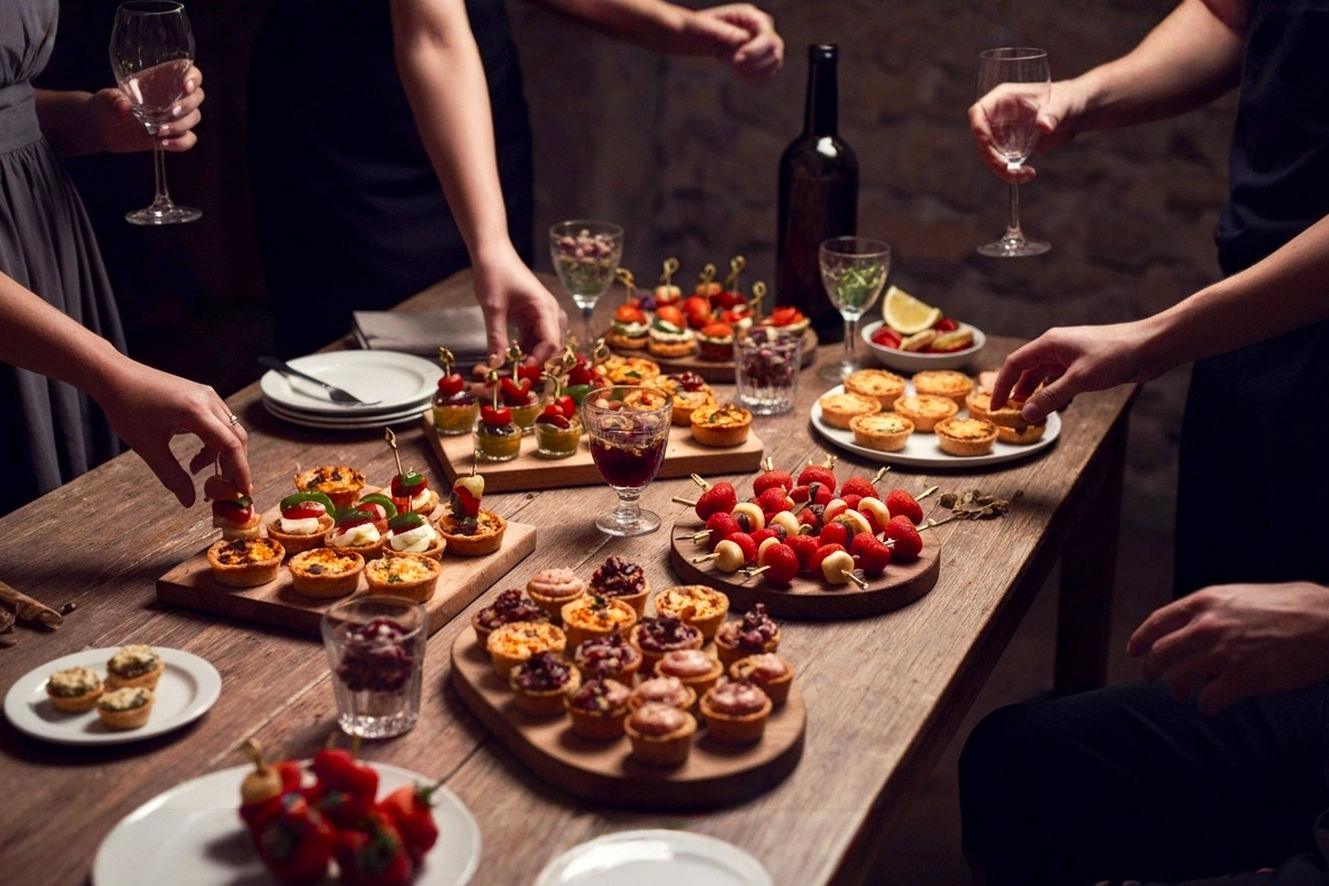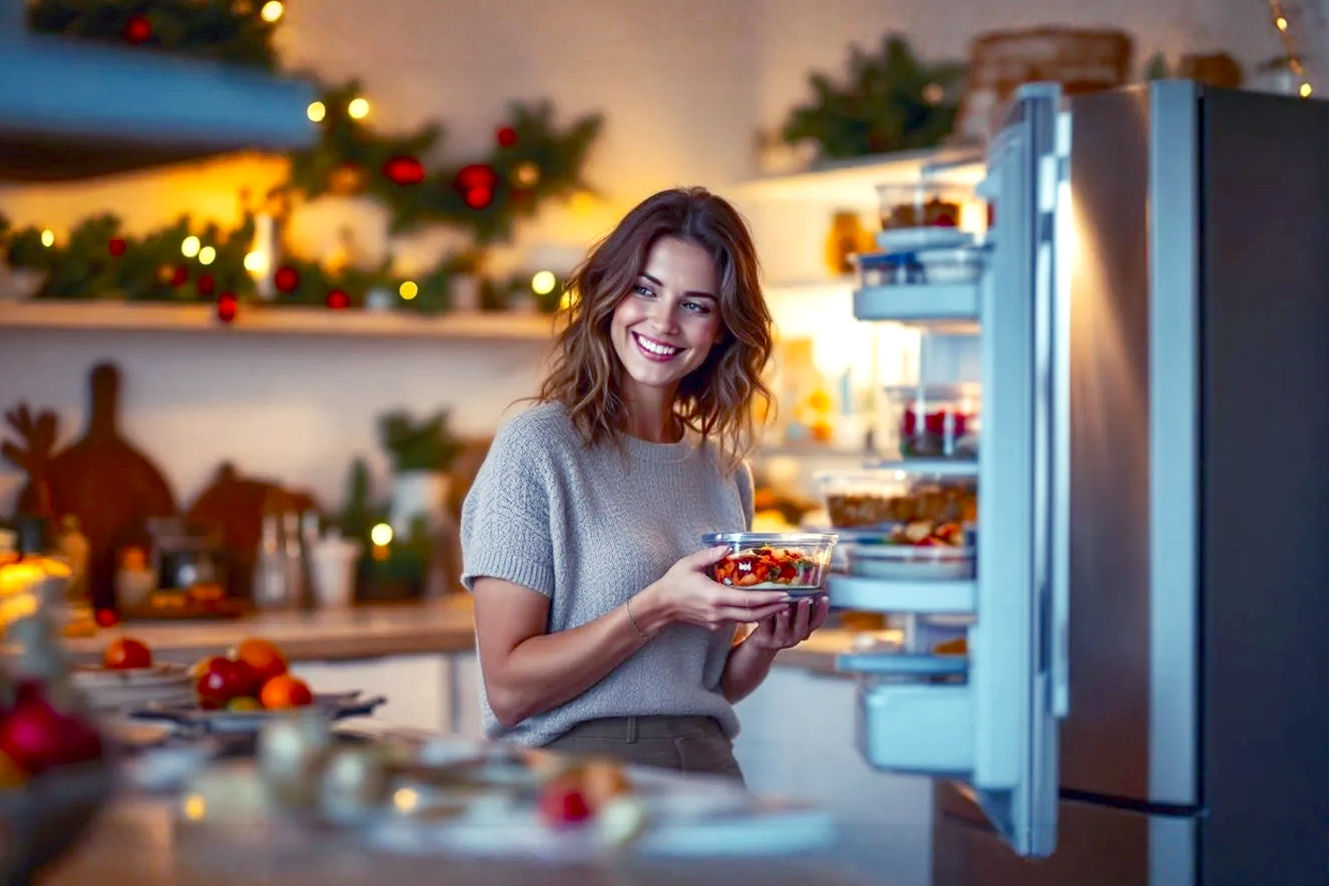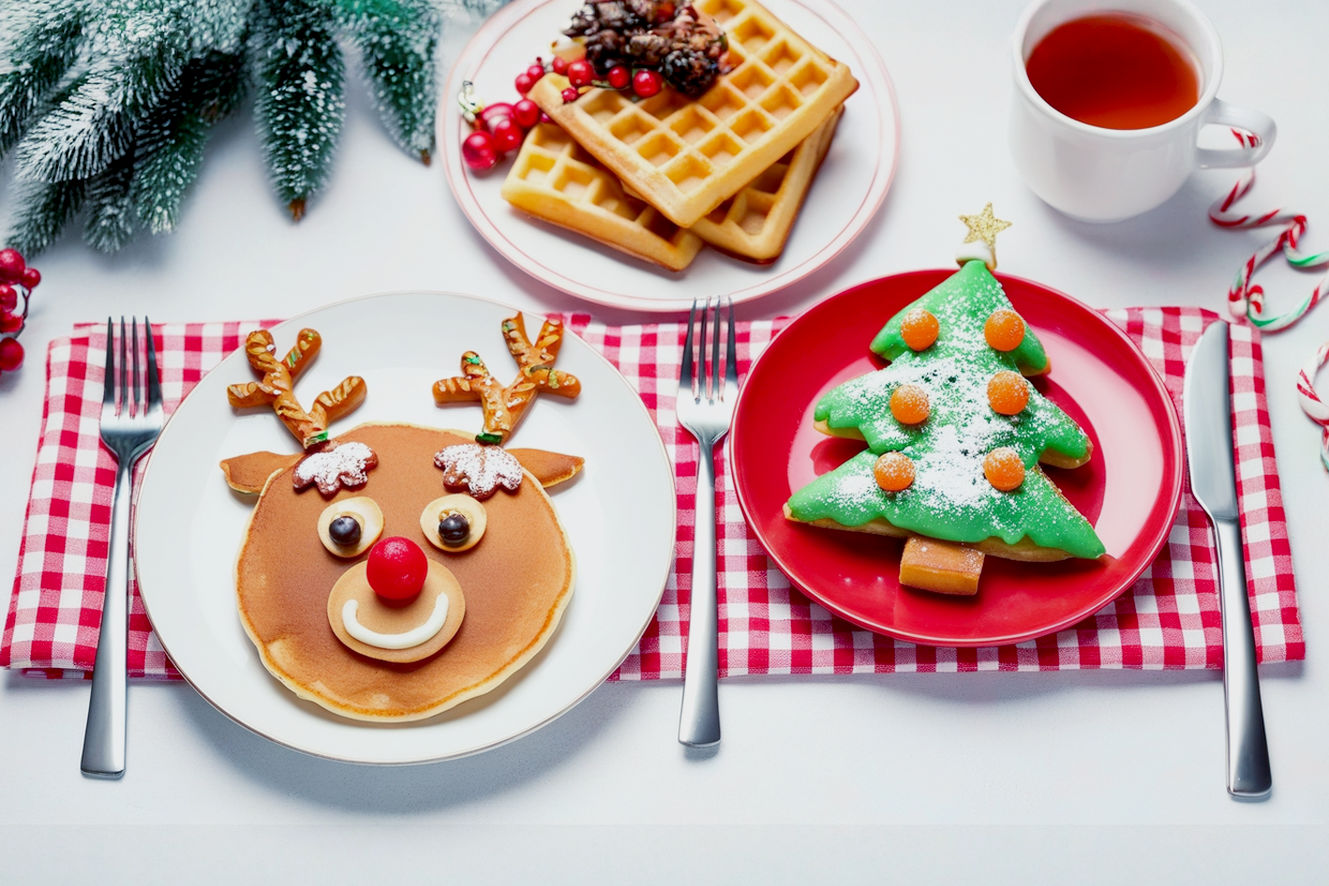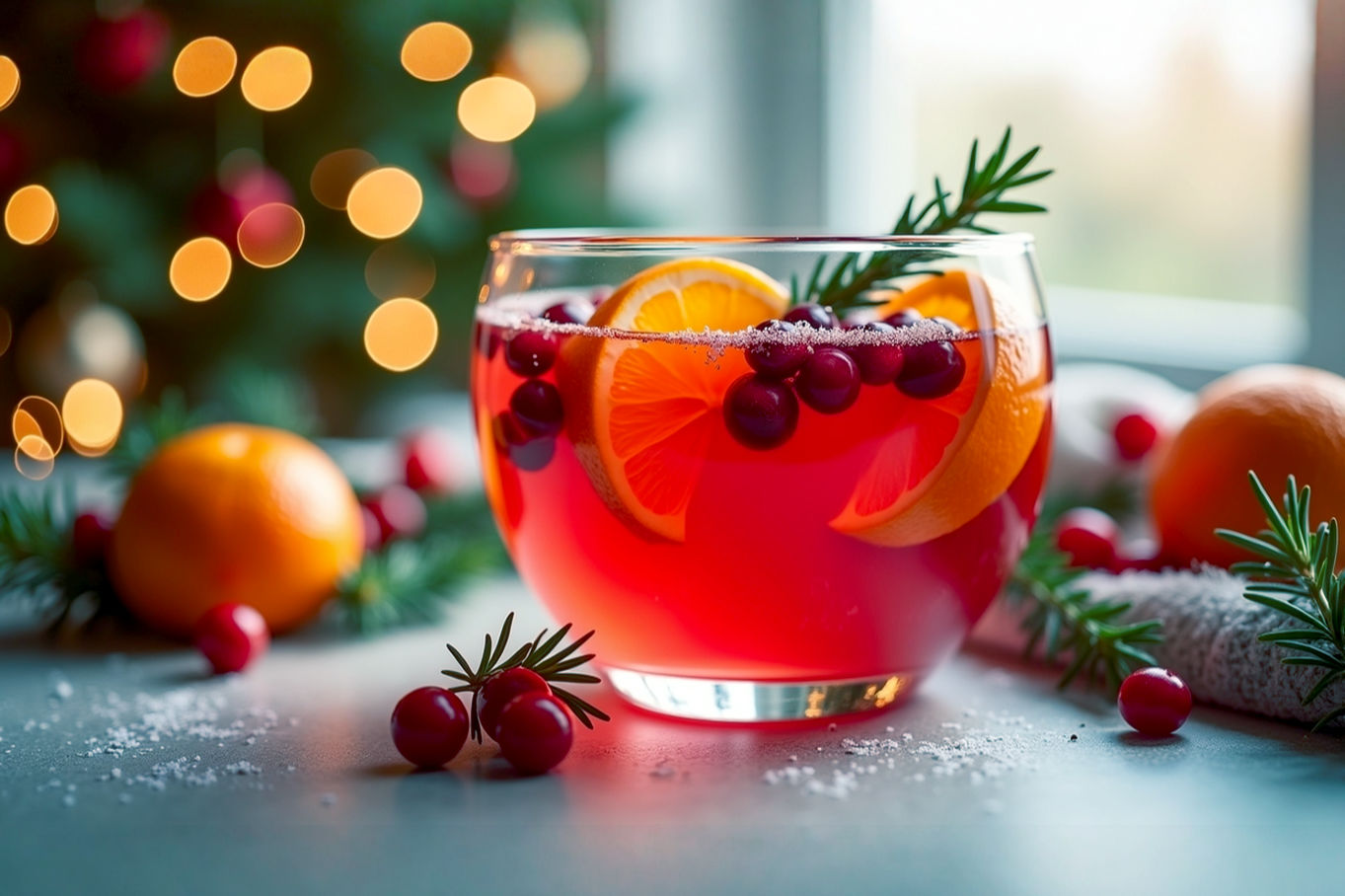This post may contain affiliate links. If you make a purchase through these links, we may earn a commission at no additional cost to you.
Christmas isn’t just about presents and festive decorations; it’s deeply rooted in the joy of shared meals and time-honored culinary traditions. For many, the aroma of a roasting turkey, the sweet scent of gingerbread, or the comforting warmth of spiced eggnog instantly brings back cherished holiday memories. These classic Christmas recipes aren’t just food; they’re a connection to our past, a way to celebrate the present, and a foundation for creating new, unforgettable moments with family and friends.
In a world that’s always changing, traditional dishes offer a comforting sense of stability and nostalgia. They remind us of grandmothers’ kitchens, childhood Christmases, and the simple pleasure of gathering around a table filled with delicious food. This guide is designed to help you master those essential, classic traditional Christmas recipes that truly define the holiday feast. We’ll cover everything from the show-stopping main courses to the delightful side dishes and the most irresistible desserts, ensuring your holiday table is nothing short of spectacular. Get ready to embrace the spirit of the season through the art of cooking!
The Grand Centerpiece: Main Dishes That Define the Feast
The main dish is undoubtedly the star of any Christmas dinner. It’s the centerpiece around which all other dishes revolve, and getting it right sets the tone for the entire meal. Whether you prefer poultry, pork, or beef, there’s a traditional option that promises to be both impressive and incredibly delicious.
The Perfect Roast Turkey: A Timeless Classic
A beautifully roasted turkey is, for many, the quintessential Christmas main course. It’s a symbol of abundance and celebration. Choosing the right turkey is your first step. Consider the size based on your guest count, generally allowing about 1.5 pounds per person to account for bones and leftovers. You can opt for a fresh or frozen bird, and some even prefer heritage breeds for their richer flavor.
One of the most crucial decisions for a truly juicy turkey is whether to brine it. Brining involves soaking the turkey in a solution of salt, sugar, and often herbs and spices. This process, known as osmosis, helps the turkey absorb moisture, making the meat incredibly tender and flavorful. On a more technical level, the salt in the brine also helps to denature (unfold) the proteins in the turkey’s muscle fibers. This allows the fibers to hold onto more water during cooking, preventing the meat from drying out. A dry brine, on the other hand, involves rubbing the turkey with salt and letting it sit uncovered in the refrigerator. This method draws out moisture initially, then the salt dissolves into that moisture, creating a concentrated brine that’s reabsorbed by the meat. It also helps crisp up the skin beautifully.
Next, decide on stuffing versus dressing. While often used interchangeably, “stuffing” is traditionally cooked inside the turkey, absorbing its juices. “Dressing” is cooked in a separate baking dish. Cooking stuffing inside the bird can be tricky for food safety, as it needs to reach 165∘F to be safe, which can sometimes overcook the breast meat. Many prefer to cook their dressing separately for this reason.
When it comes to roasting, a common technique involves starting the turkey at a higher temperature (like 425∘F) for the first 30-45 minutes to get the skin crispy, then reducing the temperature (to 325∘F or 350∘F) for the remainder of the cooking time. Basting the turkey periodically with pan juices or butter can help keep the skin moist and promote browning, though some argue it cools the oven and extends cooking time. The most critical step is resting the turkey after it comes out of the oven. This allows the juices, which have been pushed to the center of the bird during cooking, to redistribute throughout the meat, resulting in a much juicier and more tender final product. Rest it for at least 20-30 minutes, covered loosely with foil.
Glazed Ham: A Sweet and Savory Alternative
For those who prefer pork or want a delicious alternative to turkey, a glazed ham is an excellent choice for Christmas dinner. Hams come in various forms, including bone-in, boneless, and spiral-cut. A spiral-cut ham is particularly convenient as it’s pre-sliced, making carving a breeze. Most hams available in stores are pre-cooked, meaning you’re essentially reheating them.
The magic of a Christmas ham often lies in its glaze. Classic glazes include a simple mixture of brown sugar and mustard, which creates a beautiful caramelized crust. Other popular options incorporate pineapple juice, cherry preserves, or even a touch of bourbon or rum for added depth. The glaze is typically applied during the last 30-60 minutes of baking, allowing it to caramelize without burning. Bake the ham according to package directions, usually around 275∘F to 325∘F, until it reaches an internal temperature of 140∘F for pre-cooked ham. For bone-in hams, carving around the bone can be a bit more challenging, but a sharp carving knife and a steady hand will make quick work of it.
Prime Rib Roast: The Ultimate Indulgence
If you’re looking to truly impress your guests and indulge in a luxurious main course, a prime rib roast is the answer. This cut of beef, also known as a standing rib roast, is renowned for its rich flavor and tender texture. When selecting your cut, you can choose between bone-in (which often yields more flavor and helps with even cooking) or boneless. A good butcher can help you select a well-marbled piece, which indicates a higher fat content that will render during cooking, adding to the juiciness and flavor.
Seasoning is key for prime rib. A generous rub of coarse salt, freshly cracked black pepper, garlic, and robust herbs like rosemary and thyme will create a flavorful crust. Many chefs use a technique called reverse searing for prime rib. This involves roasting the meat at a very low temperature (e.g., 200∘F to 250∘F) for several hours until it reaches just below your desired final internal temperature. Then, you briefly blast it with very high heat (e.g., 450∘F or even a hot skillet) at the end to create a beautiful, crispy crust. This low-and-slow approach ensures even cooking from edge to edge, minimizing the gray band often seen in traditionally roasted meats.
For a perfect medium-rare, aim for an internal temperature of 125∘F to 130∘F before the final sear. As with turkey, resting the prime rib is absolutely critical. Allow it to rest for at least 20-30 minutes, tented with foil. This resting period allows the muscle fibers to relax and reabsorb the juices, ensuring every slice is incredibly tender and moist. Carve against the grain for maximum tenderness.
Essential Supporting Roles: Classic Christmas Side Dishes
While the main dish takes center stage, the supporting cast of side dishes is equally important in creating a truly memorable Christmas feast. These traditional accompaniments complement the richness of the main course and add variety to the plate.
Creamy Mashed Potatoes: The Ultimate Comfort
Mashed potatoes are a universal comfort food, and at Christmas, they’re practically mandatory. The key to truly great mashed potatoes starts with choosing the right potato. Russet potatoes are high in starch and low in moisture, making them ideal for a fluffy, light mash that readily absorbs butter and cream. Yukon Gold potatoes offer a slightly creamier texture and a naturally buttery flavor. Waxy potatoes like red or new potatoes are generally not recommended as they can become gummy when mashed.
After peeling, cut the potatoes into even-sized pieces to ensure they cook uniformly. Boiling them in salted water until fork-tender is the most common method. Some prefer steaming to prevent waterlogging, which can dilute flavor. The secret to a smooth, lump-free texture is to mash them while they’re hot. A potato ricer or a sturdy hand masher works best; avoid using a food processor, which can overwork the starch and result in a gluey consistency. Generous amounts of butter, warm milk or cream, and proper seasoning (salt and white pepper are classic) are essential for that rich, creamy texture and irresistible flavor. Don’t be shy with the butter!
Savory Gravy: The Sauce That Binds It All
What’s a roast turkey or prime rib without a rich, savory gravy? This essential sauce pulls the entire meal together. The best gravy starts with the pan drippings from your roasted meat. After removing the roast, carefully pour the drippings into a fat separator or a bowl, allowing the fat to rise to the top. Skim off most of the fat, leaving behind the flavorful meat juices and browned bits (known as fond) at the bottom of the roasting pan.
To make the gravy, place the roasting pan over a burner and deglaze it with a liquid like chicken or beef broth, wine, or even water, scraping up all those flavorful fond bits. For thickening, a roux is a classic choice: melt butter in a saucepan, whisk in an equal amount of flour, and cook for a few minutes until golden. Gradually whisk in your deglazed pan juices and additional broth until you reach your desired consistency. Alternatively, a cornstarch slurry (cornstarch mixed with a small amount of cold water) can be whisked into simmering liquid for a quick, clear gravy. Season generously with salt and pepper, and consider adding a touch of fresh herbs like thyme or sage. If your gravy is lumpy, you can strain it through a fine-mesh sieve. If it’s too thin, simmer longer to reduce; if too thick, add more broth.
Cranberry Sauce: Tartness to Balance the Richness
Cranberry sauce provides a crucial tart counterpoint to the rich, savory flavors of the main course and sides. While canned cranberry sauce is certainly convenient, making it from scratch is incredibly simple and yields a far superior flavor and texture.
A basic homemade cranberry sauce recipe requires just a few ingredients: fresh cranberries, sugar, and water or orange juice. You simply combine them in a saucepan and simmer until the cranberries burst and the sauce thickens. The natural pectin in cranberries acts as a gelling agent, giving the sauce its characteristic consistency. For an extra layer of flavor, add a strip of orange zest or a pinch of cinnamon or cloves during cooking. Some people like to add a splash of port wine or Grand Marnier for a more sophisticated touch. The vibrant color and bright, tangy flavor of homemade cranberry sauce are truly unmatched.
Classic Green Bean Casserole: A Holiday Staple
The green bean casserole is a beloved, if sometimes debated, holiday staple. The traditional recipe, invented in 1955, uses canned green beans, condensed cream of mushroom soup, and crispy fried onions. It’s a testament to simple, comforting flavors.
However, many modern cooks are elevating this classic. You can significantly improve the dish by using fresh green beans (blanched until tender-crisp), a homemade cream sauce (made with butter, flour, milk, and fresh mushrooms), and crispy fried shallots instead of the canned onions. This approach offers a fresher taste and a more refined texture while still retaining the comforting essence of the original. The homemade version allows you to control the sodium and use higher quality ingredients, resulting in a casserole that feels both traditional and gourmet.
Sweet Potato Casserole with Marshmallow Topping: A Sweet Delight
For those who enjoy a sweeter side dish, sweet potato casserole with a toasted marshmallow topping is a must-have. The foundation of this dish is, of course, sweet potatoes. You can either roast them until tender (which concentrates their natural sweetness) or boil them. After cooking, mash them until smooth.
The mashed sweet potatoes are then typically mixed with ingredients like brown sugar, butter, cinnamon, nutmeg, and sometimes a splash of orange juice or milk. This creates a rich, spiced base. The casserole is then topped with marshmallows (mini or large) and baked until the sweet potato mixture is heated through and the marshmallows are beautifully golden brown and gooey. Be careful not to burn the marshmallows; a quick blast under the broiler for a minute or two at the very end can achieve that perfect toasted exterior. This dish offers a delightful contrast of textures and a comforting sweetness that complements the savory elements of the Christmas meal.
Sweet Endings: Irresistible Christmas Desserts
No Christmas feast is complete without an array of delectable desserts. These sweet treats are often the highlight for many, especially children, and provide a festive conclusion to the holiday meal.
Festive Christmas Cookies: A Baking Tradition
Baking Christmas cookies is a cherished annual tradition for many families. It’s a wonderful activity to do with kids and results in delicious treats perfect for sharing or gifting.
Gingerbread Cookies: Spicy and Sweet
Gingerbread cookies are synonymous with Christmas. Their warm, spicy aroma fills the home with holiday cheer. The dough typically contains molasses, ginger, cinnamon, cloves, and nutmeg. It’s crucial to chill the dough for at least an hour (or even overnight) before rolling. This allows the gluten to relax, making the dough easier to handle and preventing the cookies from spreading too much during baking. Once chilled, roll the dough to about 1/4-inch thickness and use festive cookie cutters. After baking and cooling, decorating with royal icing (a hard-drying icing made from egg whites or meringue powder, powdered sugar, and water) allows for intricate designs and a beautiful, glossy finish.
Classic Sugar Cookies: Versatile and Fun
Classic sugar cookies are incredibly versatile and a favorite for decorating. The dough is simple, usually made with butter, sugar, eggs, flour, and vanilla extract. Like gingerbread dough, chilling the sugar cookie dough is important for maintaining shape during baking. These cookies provide a perfect canvas for colorful icings, sprinkles, and edible glitter. You can use various cookie cutters to create stars, trees, snowflakes, or any other festive shape. Decorating sugar cookies is a fun activity for all ages and allows for endless creativity.
Pecan Pie: Southern Comfort for the Holidays
While often associated with Thanksgiving, pecan pie is a rich and satisfying dessert that also finds a welcome place at the Christmas table, especially in the Southern United States. The foundation of a great pecan pie is a flaky pie crust. You can make your own or use a good quality store-bought crust. The filling is a rich, gooey mixture typically made with corn syrup (light or dark), eggs, butter, sugar, and, of course, plenty of pecans. The corn syrup contributes to the pie’s characteristic translucent, syrupy texture when baked. For best results, bake the pie until the edges are set but the center still has a slight jiggle, indicating it’s perfectly cooked but not overbaked. Serve warm, perhaps with a dollop of whipped cream or vanilla ice cream.
Yule Log Cake (Bûche de Noël): A Showstopper
The Yule Log Cake, or Bûche de Noël, is a visually stunning and delicious dessert that truly makes a statement on your Christmas table. It’s a traditional French dessert designed to resemble a log, complete with “bark” and festive decorations.
The cake itself is a light and airy sponge cake roll (often a genoise or a simple roulade). The key is to roll the warm cake in a clean kitchen towel immediately after baking to create the log shape, allowing it to cool in that form. The filling can vary, but a rich chocolate ganache or a smooth buttercream (often chocolate or coffee flavored) are popular choices. After unrolling the cooled cake, spread the filling evenly, then re-roll it tightly. The exterior is then frosted with more ganache or buttercream, and a fork is used to create a “bark” texture. Decorations like meringue mushrooms, fresh cranberries, sprigs of rosemary, or powdered sugar “snow” complete the illusion of a festive log. It’s a bit more involved than some other desserts, but the impressive result is well worth the effort.
Christmas Pudding (Plum Pudding): A Rich Tradition
Christmas Pudding, also known as Plum Pudding, is a deeply traditional and incredibly rich dessert, particularly popular in the United Kingdom and Commonwealth countries. Despite its name, it rarely contains plums; the “plum” refers to dried fruits in general.
The ingredients are a mix of dried fruits (raisins, currants, sultanas), suet (a type of beef fat, though vegetarian alternatives exist), breadcrumbs, flour, spices (nutmeg, cinnamon, cloves), and often a generous amount of brandy or stout. The pudding is traditionally steamed for many hours, sometimes even days, which gives it its dense, moist texture and allows the flavors to meld beautifully. It’s often made weeks or even months in advance and “fed” with more brandy over time, which helps preserve it and deepen its flavor. On Christmas Day, it’s typically reheated by steaming, then often doused in more brandy and dramatically flamed before serving. It’s traditionally served with brandy butter (a rich mixture of butter, powdered sugar, and brandy) or a creamy custard. It’s a truly unique and historic Christmas dessert.
Eggnog: The Creamy Holiday Drink
Eggnog is the quintessential creamy, spiced holiday beverage. While store-bought versions are readily available, homemade eggnog offers a fresher, richer flavor. The basic ingredients include eggs, sugar, milk, cream, and a generous grating of fresh nutmeg. Many recipes also include spirits like bourbon, rum, or brandy.
Making homemade eggnog involves tempering the eggs: slowly whisking hot milk and cream into beaten egg yolks and sugar to gently cook the yolks without scrambling them. This process is crucial for both texture and food safety. The mixture is then gently heated until it thickens slightly. After chilling, the eggnog can be served as is, or you can fold in whipped egg whites or whipped cream for an even lighter, frothy texture. Always serve with a sprinkle of fresh nutmeg on top. Whether served hot or cold, with or without spirits, eggnog is a rich and festive drink that embodies the spirit of Christmas.
Beyond the Dinner Table: Christmas Morning and Brunch Ideas
Christmas Day often starts early, and while the big dinner is the main event, a delicious and easy Christmas morning breakfast or brunch can make the day even more special.
Overnight French Toast Casserole: Easy Morning Magic
An Overnight French Toast Casserole is a brilliant solution for Christmas morning. The beauty of this dish is that you can assemble it the night before, pop it in the refrigerator, and then simply bake it in the morning. This saves precious time and allows you to enjoy the festive morning without being stuck in the kitchen.
The casserole typically uses slices of day-old bread (like challah or brioche, which hold up well), soaked in a mixture of eggs, milk, cinnamon, and vanilla. A sweet streusel topping made with butter, flour, brown sugar, and cinnamon is often sprinkled over the top before baking, adding a delightful crunch. In the morning, you just preheat the oven and bake until golden and puffed. Serve with maple syrup, fresh berries, or a dusting of powdered sugar. It’s a comforting and satisfying way to start Christmas Day.
Cinnamon Rolls: Warm and Inviting
The aroma of freshly baked cinnamon rolls on Christmas morning is simply irresistible. While they require a bit more effort than an overnight casserole, the reward is a warm, soft, sweet pastry that’s perfect with a cup of coffee or hot chocolate.
Making cinnamon rolls involves preparing a yeast dough, which requires kneading and rising time. The dough is then rolled out, spread with a mixture of butter, cinnamon, and brown sugar, and rolled up into a log before being sliced into individual rolls. After a second rise, they’re baked until golden. The classic finishing touch is a rich, tangy cream cheese frosting, generously spread over the warm rolls. While they take some time, the process can be broken down, with the dough made the day before and refrigerated overnight, allowing for a quicker assembly and bake on Christmas morning.
Tips for a Stress-Free Christmas Cooking Experience
Preparing a grand Christmas feast can feel daunting, but with a little planning and smart strategies, it can be an enjoyable and relatively stress-free experience.
Planning and scheduling are your best friends. Start by writing down your entire menu, then list all the ingredients you’ll need. Create a timeline for cooking, noting what can be made ahead of time. Many components, like cranberry sauce, pie crusts, and even some vegetable preparations, can be done days in advance. This approach, often called mise en place (a French culinary term meaning “everything in its place”), involves preparing all your ingredients—chopping vegetables, measuring spices, portioning meats—before you start cooking. This streamlines the actual cooking process significantly.
Don’t be afraid to delegate tasks. If family or friends offer to help, take them up on it! Assign specific side dishes, desserts, or even simple tasks like setting the table. This not only lightens your load but also makes the cooking process a shared, collaborative effort, adding to the festive atmosphere.
Using kitchen tools efficiently can also save time and effort. A good quality stand mixer for baking, a sharp set of knives for prep, and an instant-read thermometer for meats are invaluable. Don’t feel pressured to make everything from scratch if time is tight. It’s perfectly fine to simplify by using some high-quality store-bought items, like pre-made pie crusts or a good quality broth for gravy. The goal is to enjoy the holiday, not to create unnecessary stress. Remember, the most important ingredient is the love and joy you put into the meal and the company you share it with.
Conclusion: Cherishing the Culinary Memories
The classic traditional Christmas recipes we’ve explored are more than just food; they are the edible threads that weave together the fabric of our holiday memories. From the succulent roast turkey that anchors the dinner table to the comforting warmth of mashed potatoes and the sweet delight of gingerbread cookies, each dish carries a story, a tradition, and a taste of home.
Mastering these recipes allows you to not only create an unforgettable feast but also to participate in a culinary heritage that spans generations. It’s about the joy of baking with loved ones, the satisfaction of a perfectly cooked meal, and the laughter shared around a table laden with delicious food. As you embark on your Christmas cooking adventures, remember that the true magic lies not just in the ingredients, but in the love and effort you pour into each dish, and the cherished memories you create with those you hold dear. May your Christmas be filled with warmth, joy, and the most delicious traditional flavors!






